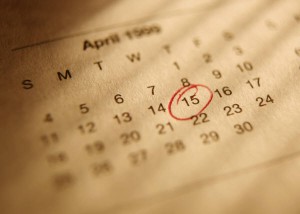How to set your fitness goals
What do you want to achieve with an exercise programme? What is your fitness goal at the moment?
They seem simple and easy questions but almost every day I get people looking for an exercise programme or signing up for a personal training package and when I ask these simple questions they are apparently taken by surprise. And most of the time the answer is something like:
“I want to get fit”
But with this answer I have to shoot another question:
“What does fit mean to you”?
First of all, everybody should have a clear fitness goal, especially before starting any kind of exercise programme. A well defined plan is also important, as “no planning is planning to fail”, but I will cover this topic in another post.
But how do you set your fitness goals?
Many people know the basic principles and use them in other areas of their lives (in business, at work…), but when it comes to setting their fitness goals they forget or don’t know how to apply them.
Here are the 5 principles I follow when helping clients to set their fitness goals:
1. Be SPECIFIC
 First thing you need to do when setting your goals is to try to be specific. As I mentioned before, many people say “I want to get fit” but what does it mean? For some people fit could mean lift heavy weight, for some run 5 km, for others run a marathon… Even when I ask what “fit” means to them sometimes the answer is “I just want general fitness”.
First thing you need to do when setting your goals is to try to be specific. As I mentioned before, many people say “I want to get fit” but what does it mean? For some people fit could mean lift heavy weight, for some run 5 km, for others run a marathon… Even when I ask what “fit” means to them sometimes the answer is “I just want general fitness”.
If you don’t have your goals well defined it is easy (I prefer to say inevitable) to lose track of them and give up all at once.
Being specific with your fitness goals is saying something like:
- “I’d like to be able to be able to run”
- “push heavy weights on a bench press or squat”
- “lose weight”
- “reduce my body fat percentage”
When you set a specific goal it doesn’t mean it cannot be changed, or that you can only have one goal. You can and probably will have more than one fitness goal as you start to be specific.
2. Have a MEASURABLE goal:
You should be able to measure your goal. For example if you say “I’d like to run”, how far would you like to run? 1 mile? 5 miles? A full marathon, 26 miles?
If you want to be strong and “push heavy weights”, how heavy? An example of a specific goal would be “push 100kg on a bench press”.
When talking about losing weight or reducing your body fat percentage is even easier to be specific as you should know how many kilograms you would like to lose or what is the fat percentage you would like to have.
3. Set an ACHIEVABLE goal:
“Set your goals high enough to inspire you and low enough to encourage you.” Anonymous
This is something personal and you should keep in mind it can be changed (in both directions – higher or lower). Once you achieve your goal you can set a new one or focus on the other goals you have set as well.
4. Be REALISTIC:
“The goal you set must be challenging. At the same time, it should be realistic and attainable, not impossible to reach. It should be challenging enough to make you stretch, but not so far that you break.” Rick Hansen
This principle runs together with the idea of having an achievable goal. You might be able to run a marathon one day but if you decide to run it next week it might be neither realistic nor achievable.
Everybody is capable of losing weight but you need to be willing to change your lifestyle.
5. Put a TIME FRAME on it:
 Set a date for you to achieve your goal.
Set a date for you to achieve your goal.
With a specific, measurable, achievable and realistic goal in mind now all you need to do is set a time frame to achieve it. Make sure to apply the other 4 principles to it.
Once you set the time frame you should periodically reassess your goal and check your progress against it.
I hope these principles help you to set your next fitness goal/challenge or even rethink and reset the goals you already have.
This is what I’ve been keeping in mind when training for my next marathon in October and I start to “hit the wall”:
“Obstacles are those things you see when you take your eyes off your goals.” Anonymous